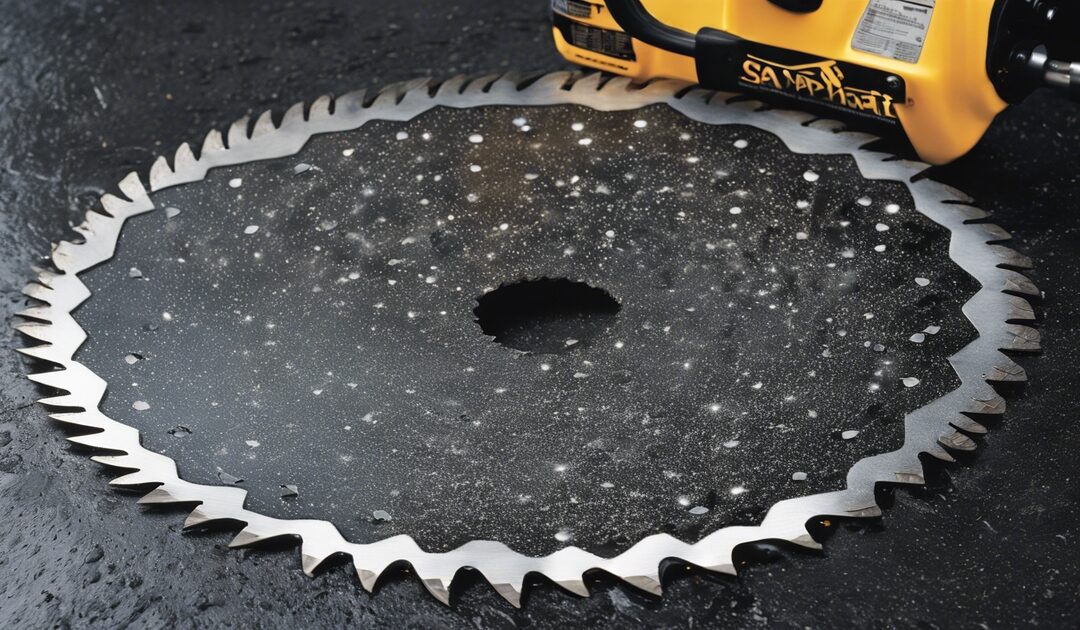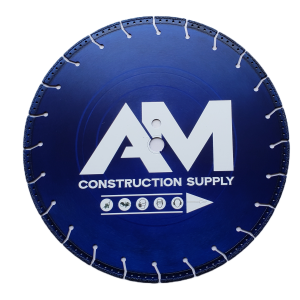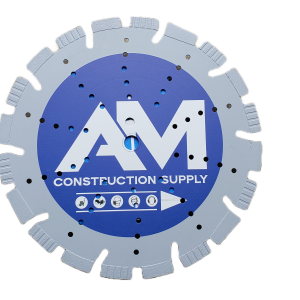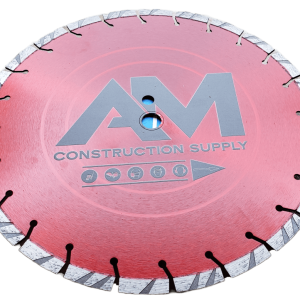Did you know that the global market for diamond tools is expected to skyrocket in the next five years? Among these tools, the 24 inch diamond asphalt saw blade stands out as a game-changer for construction and renovation projects. Its unmatched durability and precision make it an essential tool for anyone looking to cut through asphalt like butter. Whether you’re a professional contractor or a DIY enthusiast, understanding how this blade can transform your work will open up new possibilities for efficiency and effectiveness. This blog post dives deep into the world of the 24 inch diamond asphalt saw blade, exploring its benefits, uses, and why it’s becoming a must-have in the industry.
Key Takeaways
- Understand the Basics: Recognizing the unique properties of diamond blades is crucial for anyone looking to purchase or use a 24-inch diamond asphalt saw blade. These blades are designed specifically for cutting through tough materials like asphalt, thanks to their diamond-tipped edges.
- Choose Wisely: Selecting the right blade involves considering the blade’s compatibility with your saw, the material you’ll be cutting, and the desired outcome. A 24-inch size is significant for larger projects, offering deep cuts and efficient work on extensive asphalt surfaces.
- Proper Use is Key: To effectively cut through asphalt, ensure your saw is set at the correct speed and that you’re using the right technique. This prevents premature wear and ensures a clean cut.
- Maintenance Matters: Regular maintenance, including checking for wear and ensuring the blade is clean, sharp, and properly attached, can significantly extend the life of your diamond asphalt saw blade.
- Extend Blade Life: Techniques such as alternating cutting materials and ensuring the blade isn’t overheating can help maintain its integrity for longer, maximizing your investment.
- Safety First: Always adhere to recommended safety protocols, including wearing appropriate protective gear and following manufacturer guidelines to prevent accidents and ensure a safe working environment.
Diamond Blade Basics
Design Features
The 24 inch diamond asphalt saw blade boasts unique design elements. These features significantly enhance its cutting efficiency. The blade’s ergonomic design plays a crucial role here. It helps reduce user fatigue during long hours of operation. This aspect is vital for professionals working on extensive projects.
Cooling vents are another innovative feature of this blade. They prevent overheating, ensuring the tool remains effective over time. These vents also contribute to the blade’s longevity, making it a reliable choice for heavy-duty tasks.
Cutting Technology
The cutting edge of this blade incorporates laser-welded diamond segments. This method ensures the segments are strongly attached to the core, providing increased strength and durability. Such a construction allows for clean and precise cuts in asphalt, which is essential for quality workmanship.
Furthermore, the segment design is tailored to minimize vibration and noise during use. This not only makes the job more pleasant but also enhances safety by reducing distractions. The technology behind these features demonstrates a commitment to performance and user experience.
Material Composition
At its core, this blade uses high-quality steel. This material choice ensures both durability and stability during cutting operations. The steel core supports the diamond segments effectively, allowing for consistent performance.
The diamonds used in these blades are selected for their cutting performance. Different types of diamond crystals impact how well they can cut through tough materials like asphalt. Some blades may also feature special coatings or treatments. These additions help protect against wear and corrosion, extending the blade’s life even further.
Understanding Asphalt Blades
Blade Thickness
The thickness of a 24 inch diamond asphalt saw blade plays a crucial role in its performance. Thicker blades are better for deeper cuts, but they might cut slower than thinner ones. This is because there’s more material to remove, which can slow down the process.
Thinner blades, on the other hand, offer quicker cuts but might not be as stable or precise. They can wobble or deviate from the cutting line if not handled carefully. For tasks requiring high precision, a balance between thickness and stability is essential.
Different tasks call for different blade thicknesses. For shallow, quick cuts, go for thinner blades. Use thicker ones for deep cuts that need more stability.
Diamond Quality
Diamond quality directly impacts how well a blade performs. The industry uses a grading system to classify diamond quality from low to high. Higher grade diamonds make the blade cut faster and last longer.
High-quality diamonds mean less time spent on each job and fewer blade changes. This efficiency is critical for professionals who value time and durability in their tools.
However, there’s a trade-off between diamond quality and cost. High-grade diamonds increase the price of the blade. It’s important to find a balance that suits your needs and budget. For professional use, investing in higher quality can be more cost-effective in the long run.
Compatibility Issues
Not all 24 inch diamond asphalt saw blades will fit every saw out there. Compatibility issues can arise with different saw models and power types.
- Check the arbor size of your saw before buying a blade.
- Ensure the diameter fits your specific needs.
Using an incompatible blade poses risks like damage to both the blade and saw, not to mention safety hazards for the user. Always verify compatibility to avoid these problems.
Selecting the Right Blade
Project Requirements
Choosing the correct 24-inch diamond asphalt saw blade requires a clear understanding of your project’s needs. Assess the cutting depth and material type first. These factors directly influence the blade’s performance and lifespan. For instance, cutting through thick layers of asphalt demands a blade designed for deep cuts without overheating.
Consider the job size and frequency too. Larger, more frequent projects justify investing in a higher-quality blade that offers durability and efficiency. In contrast, smaller, occasional tasks might not need such a premium option.
If you’re unsure about your project requirements, it’s wise to consult with experts or manufacturers. They can offer valuable insights into choosing the most suitable blade for your specific needs.
Saw Types
The 24-inch diamond asphalt saw blade fits several types of saws, each with its benefits and limitations. Handheld saws are flexible and perfect for small jobs or tight spaces. However, they may not provide the stability needed for precise cuts on larger surfaces.
Walk-behind saws, on the other hand, are ideal for extensive cutting tasks. They offer better control and can handle deeper cuts with ease. But they require more space to operate and might not be suitable for confined areas.
Depending on your saw type, you might need specific adjustments or accessories to achieve optimal performance. Always check compatibility before purchasing a blade to ensure it matches your equipment’s specifications.
Performance Factors
Several key factors influence the performance of a 24-inch diamond asphalt saw blade. Speed, pressure, and material hardness play crucial roles in determining how efficiently the blade cuts through asphalt.
Environmental conditions like temperature and humidity can also affect cutting efficiency. High temperatures may cause the asphalt to become softer, requiring adjustments in speed or pressure to avoid damaging both the material and the blade.
Proper selection based on these performance factors is essential for achieving desired results without compromising safety or efficiency. It ensures that your project proceeds smoothly while maximizing the blade’s effectiveness.
Cutting Through Asphalt
Safety Measures
Safety should always come first when operating a 24 inch diamond asphalt saw blade. It’s crucial to wear the right personal protective equipment (PPE), including eye protection, ear defenders, and durable gloves. These items shield operators from flying debris and the loud noise of cutting asphalt.
Before starting any cutting job, inspecting the blade and saw ensures they are in good condition. This step can prevent potential accidents caused by damaged equipment. Always follow the manufacturer’s guidelines and industry best practices for safe operation. They provide valuable insights on how to handle the equipment correctly and safely.
Operational Techniques
For efficient cutting, maintaining optimal speed and pressure is key. Too much pressure can wear down the blade faster, while too little might not cut through the asphalt effectively. Finding that balance is essential for precise cuts.
Starting cuts on asphalt requires a steady hand and an understanding of how to apply pressure gradually. When encountering tough sections or varying materials within the asphalt, adjusting your technique helps navigate these challenges smoothly. As the blade wears down or if the material conditions change, adapting your operational methods ensures consistent performance.
Efficiency Tips
Regular inspections of your blade keep it sharp and ready for action. A dull blade not only slows down work but can also be dangerous to use as it requires more force to cut through materials.
Using water not only cools down the blade but also significantly reduces dust creation, leading to more efficient cuts and a cleaner work environment. Planning your cuts strategically minimizes unnecessary changes of blades and reduces downtime, keeping your project on schedule.
Maintenance Best Practices
Cleaning Methods
After slicing through asphalt, your 24-inch diamond saw blade needs proper cleaning to maintain its efficiency. Use soapy water and a soft brush to gently scrub the blade. This method removes any asphalt residue without harming the blade’s diamond segments.
Avoid using harsh chemicals or abrasive tools for cleaning. These can damage the diamond coating, reducing the blade’s cutting ability. Rinse it thoroughly with clean water after washing and let it dry completely.
Storage Solutions
Storing your diamond saw blade correctly is crucial for its longevity. Keep it in a dry place where temperature fluctuations are minimal. This prevents rust and corrosion, ensuring the blade remains in top condition for future projects.
For transportation and long-term storage, invest in a protective cover or case. These covers shield the blade from physical damage and environmental factors. They also make handling safer, reducing the risk of accidents.
Inspection Tips
Regular inspections can catch early signs of wear or damage, preventing unexpected failures during cutting jobs. Look closely at the diamond segments for any cracks or detachment from the core. These issues can compromise the blade’s structural integrity.
The core should be free from warps or bends. Any deformity might indicate internal damage that could lead to breakage under stress. If you notice significant wear or damage, consult a professional before using the blade again.
Extending Blade Life
Proper Usage
The key to extending the life of a 24 inch diamond asphalt saw blade lies in its proper usage. It’s crucial to operate the blade at the recommended speed and ensure it’s used exclusively for cutting materials it’s designed for. This precision not only guarantees optimal performance but also safeguards against premature wear.
Forcing the blade through material or applying excessive pressure can lead to unnecessary strain. Such practices not only shorten the blade’s lifespan but may also pose safety risks. Adhering to the manufacturer’s guidelines ensures both optimal usage and safety. These instructions typically cover everything from operational speeds to compatible materials, providing a roadmap for efficient and safe use.
Avoiding Common Mistakes
One common pitfall is using the diamond asphalt saw blade on unsuitable materials. This mismatch can cause rapid wear or even damage the blade, compromising its integrity. Ensuring compatibility between the blade and material prevents such issues, preserving the tool’s condition over time.
Improper installation is another mistake that can affect performance and safety. A poorly installed blade might wobble or detach, leading to uneven cuts or accidents. Therefore, correct installation according to manufacturer instructions is non-negotiable.
Regular maintenance is essential for preventing common issues like overheating or uneven wear. As discussed in “Maintenance Best Practices,” keeping the blade clean and inspecting it for signs of wear are part of routine care that extends its service life.
Replacement Timing
Recognizing when it’s time to replace your 24 inch diamond asphalt saw blade is crucial for maintaining cutting efficiency. Signs like reduced cutting speed or visible wear on the blade indicate it’s nearing the end of its useful life. These symptoms suggest that the blade no longer performs at its peak, impacting project outcomes.
Tracking usage and noting wear patterns help anticipate when a replacement might be necessary. This proactive approach allows users to plan ahead, ensuring they have a new blade ready before performance significantly declines.
Consulting with professionals or manufacturers offers additional guidance on replacement timing. Their expertise can provide insights tailored to specific usage patterns and materials, ensuring decisions are well-informed.
Performance Optimization
Speed Adjustments
Adjusting the cutting speed is crucial for working with a 24 inch diamond asphalt saw blade. Start at a lower speed, especially when dealing with harder materials or if the blade shows signs of wear. This approach allows you to gauge how the blade interacts with the material without causing undue stress. Gradually increase the speed to find the optimal cutting rate that balances efficiency and precision. However, it’s important to never exceed the blade’s maximum speed rating. Doing so can lead to damage or pose significant safety risks. Finding the right speed ensures both safety and effectiveness in your cutting tasks.
Depth Control
For precise cuts, controlling the depth of your cut is essential. Using saw adjustments or guides can help maintain a consistent depth throughout your work, which is vital for achieving clean and accurate results. When working with thick or particularly challenging materials, it’s advisable to increase the depth gradually. This method reduces strain on the 24 inch diamond asphalt saw blade and helps prevent potential damage. Consistent depth control not only enhances the quality of your cuts but also contributes to extending the life of your blade by minimizing unnecessary wear.
Water Use
Water plays a significant role in optimizing the performance of diamond asphalt saw blades by cooling them and reducing dust during cutting operations. To maximize efficiency and protect your blade, it’s important to use an appropriate water flow rate. Too little water can cause overheating and significantly reduce the lifespan of your blade, while optimal water use ensures efficient cooling and dust control. Always ensure sufficient water flow during cutting to avoid these issues and maintain blade integrity for longer periods.
Safety Protocols
Personal Protective Equipment
When operating a saw with a 24 inch diamond asphalt blade, wearing the right personal protective equipment (PPE) is crucial. This includes:
- Eye protection to shield against flying debris.
- Durable gloves to protect hands from vibrations and cuts.
- Ear protection to reduce the risk of hearing damage.
These items are essential for safeguarding against common hazards like flying particles and excessive noise. It’s important to choose high-quality, industry-approved PPE. This ensures maximum safety and comfort during prolonged use.
Machine Handling
Handling the saw correctly is key to both safety and effectiveness. Smooth operation prevents jerky movements that can lead to accidents or damage. Always maintain a firm grip and adopt a stable stance. This enhances control and reduces the risk of slips or mishaps.
Regular maintenance of the machine is also vital. It keeps the saw in top condition, ensuring optimal performance and safety. Check the blade for wear and ensure all parts function correctly before each use.
Emergency Procedures
Even with proper precautions, emergencies can occur. If the blade breaks or malfunctions, knowing how to react is crucial. Immediately shut off the saw to prevent further accidents. This quick action can significantly reduce injury risks.
Always have a first aid kit close by, along with emergency contact information. This preparation helps manage any incidents swiftly and effectively.
Troubleshooting Common Issues
Overheating Solutions
Overheating can severely shorten the lifespan of a 24 inch diamond asphalt saw blade. To prevent this, it’s crucial to use water during cutting operations. Water acts as a coolant, reducing friction and heat build-up. Recognizing signs of overheating is equally important. These include discoloration of the blade or a decrease in cutting performance.
To cool the blade safely, stop cutting and allow water to run over the blade without spinning it. Scheduling breaks during long cutting sessions helps too. This lets the blade cool down naturally, preventing damage from thermal shock.
Wear Patterns
Wear patterns on your diamond asphalt saw blade offer valuable insights into its usage and condition. Even wear indicates proper use, while uneven patterns suggest potential issues with cutting techniques or equipment settings. Adjusting these can often resolve the problem.
If you notice unusual or uneven wear patterns, consulting with a professional is wise. They can provide guidance on whether you need to adjust your technique or if the equipment requires calibration.
Cutting Irregularities
Cutting irregularities often stem from blade misalignment or worn segments on the blade itself. To address these issues, first ensure that the blade is correctly aligned with the saw’s axis. Check for worn segments that might need replacing.
Troubleshooting steps include adjusting the saw’s alignment and replacing any worn parts on the blade. If precision doesn’t improve, seeking professional advice is recommended. In some cases, blade replacement may be necessary to restore optimal performance.
Final Remarks
Selecting the right 24 inch diamond asphalt saw blade is crucial for your cutting jobs. We’ve covered everything from the basics, understanding asphalt blades, to maintenance best practices and safety protocols. Remember, the right blade not only makes your work easier but also extends the life of your equipment and ensures optimal performance. Cutting through asphalt requires precision, and with the insights provided, you’re now equipped to make informed decisions. Keep troubleshooting common issues in mind to avoid downtime and maintain efficiency.
Now’s the time to put this knowledge into action. Choose the best blade, follow the maintenance tips, and optimize your cutting process. Your projects deserve the best outcomes, and with these guidelines, you’re set to achieve them. Don’t settle for less—ensure your blades are up to the task for smoother operations and top-notch results. Ready to enhance your cutting efficiency? Dive in and see the difference for yourself.
Frequently Asked Questions
What is a diamond asphalt saw blade?
A diamond asphalt saw blade is a specialized tool designed for cutting through asphalt efficiently. It uses diamond segments for durability and precision.
How do I choose the right 24 inch diamond asphalt saw blade?
Select a blade based on the depth of cut you need, the type of asphalt, and your cutting equipment’s specifications. Prioritize blades designed specifically for asphalt to ensure compatibility and performance.
Can I use a 24 inch diamond blade on both wet and dry surfaces?
Yes, most 24 inch diamond asphalt saw blades are versatile enough to be used on both wet and dry surfaces, but always check the manufacturer’s recommendations to ensure optimal performance and safety.
How often should I perform maintenance on my diamond asphalt saw blade?
Regular maintenance after each use is crucial. Clean the blade to remove any debris and inspect it for wear or damage to extend its life.
What are some tips for extending the life of my diamond asphalt saw blade?
Ensure proper installation, use the correct cutting technique, avoid forcing the blade through the material, and adhere to recommended operating speeds. Regular maintenance also plays a significant role in extending blade life.
Why is it important to follow safety protocols when using a diamond asphalt saw blade?
Following safety protocols prevents accidents and ensures safe operation. Protective gear like gloves, goggles, and ear protection minimize risk while handling sharp blades and operating high-speed cutting equipment.
What should I do if my diamond asphalt saw blade isn’t cutting effectively?
Check if the blade is correctly installed, ensure it’s suitable for the material being cut, inspect for dullness or damage, and adjust your cutting technique. If issues persist, consult with a professional or consider replacing the blade.





